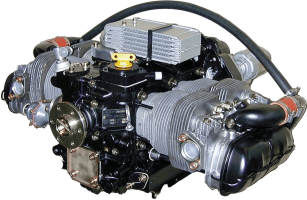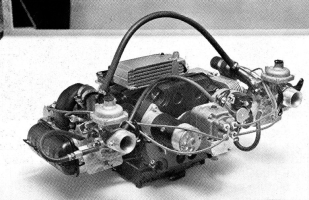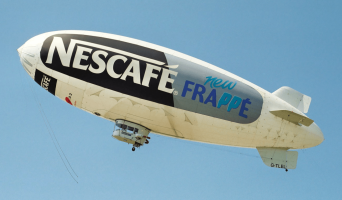okikuma
Member
One of the Erskine Park regulars with his VW homebuilt gyro Gyrocopter Gyroplane mid 1990s
Until the crank shaft snaps at the propThat throaty VW sound brings back memories.
I wonder about the adequacy of the yaw control with that relatively flat V-tail dihedral and modest tail-surface area. Especially engine-out.
Of course VWs never quit on you...
Well Chuck and others chose to machine the case out for a thrust bearing because it happened so much. I believe revmaster does this too. If I remember correctly Chuck also put his prop on the accessory end of the engine. There was enough aluminum in that area of the case for the thrust bearing there. I’m a little fuzzy on that so I could be wrong. The thing I didn’t like was the guys turning those Troyer and Tennessee props over 4000 pushing the Tips supersonic. It made Volkswagens and Subarus louder than a Mac.Mine never did that, Mike (though it was a worry; I used to read that SRC newsletter!).
It burned out big-end bearings pretty often, though. The "unreliable" 2-stroke Rotaxes turned out in fact to be a helluva lot more reliable than my homebrewed VW conversion.
Similar to this Doug?For sure, Mike, the VW was ear-splitting, especially when flown with the usual short straight pipes.
Revmaster's #3-4 + thrust combo bearing mod is state-of-the-art. It's also extensive and therefore expensive.
Bensen's VW conversion plans point out that the machined recess at the clutch end of the engine is a perfect fit for the OD of a standard bearing. But a clutch-end PTO conversion is considerable work as well; you must make a hub with 4 precisely-located pin holes to match the drive pin pattern on the crank, add a seal and housing, and come up with a mount frame that's strong enough. That last bit is tough, as there are no large, sturdy bosses on the fan-shaft end of the case -- which is the end that becomes the "firewall" end if you put the prop on the clutch end.
I made a clutch-end hub setup of this type, but ran out of money (temporarily, thanks) and never flew it. By then, the Rotaxes had appeared. Home-brewing engine conversions became an exercise similar to growing cotton, ginning and spinning it, and weaving your own T-shirts. I discovered that I'd rather buy a Rotax in a box, bolt it on and go flyin.'





Thanks JR. They look relatively compact. About 200 pounds dry perhaps.I flew Limbach powered motorgliders in the 1980s that were about 80 hp as I recall, with a 90hp option.
Hello Jim,Wayne,
I've never flown a VW engine. The only engine of this type I've worked on has been the Type 4 in my 914.
What is that crossover tube on the intakes? Does the Limbach use a bed mount?
How much horsepower can these engines reliably produce?
Jim
About 10 - 15 yrs ago at Torrance Airport. I recall a CFI-G was using a Taifun 17E for add on Glider ratings. The motor glider had a full panel similar to the one below.Cool! I think I knew that as a "Sperber" in a different iteration, RF-5b. One of the ships I flew was the Valentin Taifun 17E. I'll grab an internet photo of it.
View attachment 1157332

I don't have a self-launch endorsement either since my flight in the RF-4D was 45+ years ago. As with most in the USA, the majority of my gider time has been with aerotow. I have been launched by a winch about five times with one actual cable break during one launch (with CFI-G in the back) at Los Alamitos AAF (CAP Glider operation).Before competition rules were changed, people used to thermal up through cloud base. You can still do it under FAA rules as you suggest, but the international sanctioning body FAI/IGC doesn't permit it for racing anymore.
I don't need the self launch endorsement because I am grandfathered in from the motorglider flying I did prior to 1997. I had to take a full-blown FAA checkride (not just a CFI endorsement) back in the 80s to get winch launch privileges (removing an aero tow only restriction), before the '97 rule changes simplified everything.
At 17 I had just got my PPL and managed to get checked out on an Fournier RF-5 and they then let me take the RF-4 which was the single seat version. I seem to remember that to start the engine you pulled a T handle on the end of some rope sitting in the cockpit. Looking back I think that was incredibly trusting of them, however ,I did also have a gliding Certificate A and B which I had done as an RAF Cadet on the Slingsby Sedbergh T-21's.In my teens I was able to fly Fournier RF-4D. It had a 1200 cc 40 hp VW engine that I think was built by Limbach. It was fun to fly.
